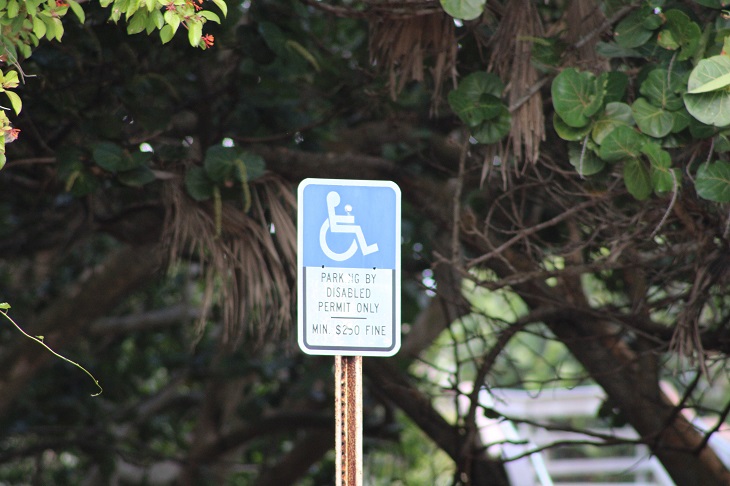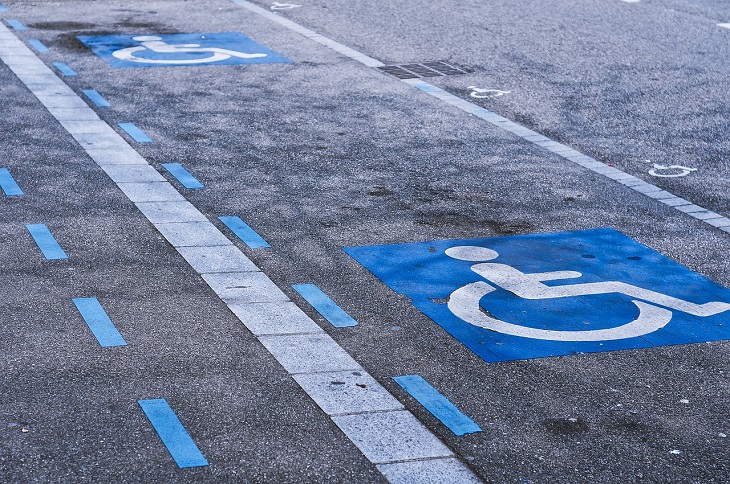Parking can be a hassle for anyone, but for people with disabilities, it often poses unique challenges. Finding an accessible parking spot close to your destination can sometimes feel like searching for a needle in a haystack. In the United States, there are regulations and solutions in place to make parking more manageable for individuals with disabilities.
Today we’ll explore some useful tips and tricks to help US drivers with disabilities navigate the parking landscape more smoothly. Whether you’ve been wondering about Rhode Island handicap parking regulations, Vermont handicap parking permit requirements, or anything in between, we’ll cover all the general rules and info you need to know about disabled parking in the US!
Understanding Disability Parking Permits
Before we dive into parking solutions, it’s essential to understand the various disability parking permits available in the US. These permits grant individuals with disabilities certain parking privileges. The two primary types of permits are:
- Accessible Parking Permit (Placard): This is a portable permit that can be hung from the rearview mirror or placed on the dashboard. It is issued to individuals with temporary or permanent disabilities and has a specific expiration date.
- Disabled Person Parking License Plate: This license plate is issued to individuals with permanent disabilities. It is affixed to the front and/or rear of the vehicle and may be valid for the life of the vehicle or may need to be renewed.
To obtain either of these permits, you’ll need to contact your state’s Department of Motor Vehicles (DMV) or equivalent agency. The application process typically requires documentation from a medical professional confirming your disability (Dr Handicap can help with this!). Requirements differ from state to state – the Wyoming handicap parking application process will generally be different to the one for a West Virginia handicap parking tag, so be sure to follow your state’s specific guidelines.
Choosing the Right Parking Spot
Once you have your disability parking permit, the next step is to choose the right parking spot. Here are some tips to help you find the most suitable spot:
- Look for the International Symbol of Access: This blue and white symbol, often painted on the ground or displayed on a sign, indicates that the parking spot is reserved for people with disabilities. This symbol will generally look the same nationwide – from North Dakota to New Mexico, handicap parking signage is pretty uniform, which makes it easy to locate a spot wherever you are.
- Choose Spots Close to the Entrance: Whenever possible, select parking spots located near the entrance of the building or facility you’re visiting. This reduces the distance you need to travel.
- Consider Accessible Features: Some parking spaces are specifically designated for vans with wheelchair ramps. If you use a wheelchair or have a larger accessible vehicle, look for these spots, as they provide more room to maneuver.
- Avoid Obstacles: Be cautious of parking spots next to carts, shopping cart corrals, or other obstacles that might restrict your ability to enter or exit your vehicle safely.
Understanding Time Limits and Regulations
Parking regulations can vary from one location to another, so it’s crucial to understand the specific rules in your area. Here are some common considerations:
- Time Limits: Some accessible parking spots have time limits, so be mindful of how long you plan to stay. These limits are often designed to ensure that as many people as possible have access to the spots.
- Payment Requirements: In some places, accessible parking may be free, while in others, you may still need to pay for parking. Always check local signage for payment information.
- Parking Meters: If you need to use a parking meter, many areas provide exemptions or reduced rates for people with disabilities. Look for information on the meter or check with local authorities for details.
- Special Permits: Some states offer additional permits for individuals with severe disabilities that may allow for extended parking privileges. Check with your state’s DMV to see if you qualify for any special permits.
Utilize Parking Apps and Technology
Technology can be a valuable ally when it comes to finding accessible parking spaces. Several apps and tools can help you locate parking spots with ease:
- Accessible Parking Apps: Apps like “Accessible Parking” or “Parking Mobility” provide information about handicap parking spaces in your area, including their locations and availability.
- Smart Parking Garages: Many parking garages in urban areas now offer smart technology that can help you find available parking spaces quickly. These systems often include accessible parking spots.
- GPS and Navigation Apps: Popular navigation apps like Google Maps and Waze can also help you identify parking facilities with accessible parking spots.
- Parking Reservations: In some cities, you can reserve accessible parking spots in advance. Check with local parking providers or use platforms like SpotHero or ParkWhiz to make reservations.
Know Your Rights and Advocate for Change
It’s crucial to know your rights as a person with a disability when it comes to parking. The Americans with Disabilities Act (ADA) outlines specific requirements for accessible parking, including the number of spaces required based on the size of the parking lot.
If you encounter issues with inaccessible parking or violations of ADA regulations, consider taking the following steps:
- Report Violations: If you notice parking spaces that are not compliant with ADA regulations, report them to the local authorities or property management. They may not be aware of the issues and can rectify them.
- Advocate for Change: Get involved with disability advocacy groups in your community. They can help you push for improvements in accessible parking and ensure that the rights of people with disabilities are upheld.
- Know the ADA Regulations: Familiarize yourself with the ADA regulations regarding accessible parking. This knowledge can be empowering when advocating for change or addressing violations.
Be a Considerate Parked Driver
Lastly, it’s important to be a considerate parked driver, not just when parking but also when using accessible parking spaces. Here are some etiquette tips:
- Never Use Accessible Spaces Without a Permit: Even if you’re running a quick errand, it’s essential to have a valid handicap parking permit to use these spaces legally.
- Leave Room for Ramps and Lifts: If you have an accessible vehicle with a ramp or lift, ensure there’s enough space around your vehicle for it to deploy safely.
- Don’t Block Access Aisles: Access aisles are the striped areas next to accessible parking spaces that allow room for wheelchair users to enter and exit their vehicles. Never park in these aisles.
- Keep Your Permit Visible: Hang your accessible parking permit from the rearview mirror or display it on the dashboard so that it’s easily visible.
Parking solutions for people with disabilities in the US are essential for ensuring equal access to public spaces. By understanding the various permits available, choosing the right parking spot, being aware of time limits and regulations, utilizing technology, knowing your rights, advocating for change, and practicing considerate parking etiquette, you can navigate the parking landscape with greater ease and accessibility. Accessible parking is not just a convenience; it’s a fundamental right that should be respected and protected for everyone.
If you’re looking for more info on disabled parking throughout the US, Dr Handicap has you covered with insights into everything from Kentucky handicap parking requirements to South Dakota handicap parking placard renewal on our blog!
Featured image by MingAo WelfareCar on Pexels

